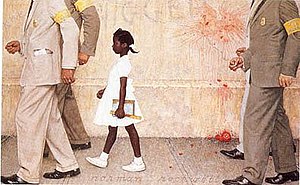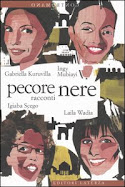I 10 Paesi più razzisti del mondo
La maglia nera va ad Hong Kong, mentre i più tolleranti sono gli Usa, la Gran Bretagna e il Canada. L'Italia classificata come Paese non razzista

Atene. Migliaia di immigrati manifestano contro il razzismo (Credits: Epa/Alkis Konstantinidis)
di Anna Mazzone
La mappa dei razzisti nel mondo regala qualche sorpresa. Secondo i risultati della ricerca World Value Survey , condotta tra il 1981 e il 2008 da un gruppo di studiosi olandesi su 87 paesidel mondo con interviste a più di 256 mila persone, il razzismo si annida persino nel cuore del Vecchio Continente, in Francia, e raggiunge i massimi livelli nelle ex colonie britanniche, dall'India a Hong Kong.
I paesi storicamente più razzisti (come Giappone e Sudafrica) si sono invece rivelati tra i più tolleranti della classifica, che vede all'ultimo posto, e quindi campione di tolleranza, gli Stati Uniti, il Canada e la Gran Bretagna. Ma è veramente così? In molti sostengono che i cittadini del Regno Unito e quelli americani e canadesi, bombardati dalle imposizioni del politically correct, alla fin fine non se la siano sentiti di rispondere in maniera sincera alle domande su chi preferirebbero come vicino di casa. Mentre più schiette sono state le risposte provenienti dall'emisfero orientale del mondo. E l'Italia come si colloca? Vediamo Paese per Paese qual è il termometro del razzismo del mondo.

Mappa dei paesi più razzisti del mondo secondo World Value Survey (Credits: Max Fisher/Washington Post)
1. Hong Kong. All'ex colonia britannica in territorio cinese va la maglia nera del paese più "intollerante" del pianeta. Il 71.8 per cento degli intervistati ha dichiarato che rifiuterebbe di vivere vicino a persone di "una razza differente" da quella della propria famiglia.
2. Bangladesh. Subito dopo l'ex colonia britannica in territorio cinese, i più razzisti sono gli abitanti del Bangladesh. Il 71.7 per cento non vuole avere rapporti con gente di "razze" diverse dalla propria.
3. Giordania. Terzo classificato è il piccolo regno di Giordania, dove i razzisti si attestano al 51.4 per cento. Basti pensare che la Giordania è meta di migliaia di palestinesi che raggiungono il Regno per poter studiare e lavorare, ma - nonostante siano apparentemente integrati nella società - non possono frequentare determinati corsi di laurea (come medicina e fisica), non possono diventare insegnanti e non possono acquistare beni immobili (case e terreni).
4. India. Chiude il gruppo dei fab four dell'intolleranza l'elefante indiano, con il 43.5 per cento di tasso di razzismo. In questo caso, il fattore culturale è determinante e la struttura castale della società, con sanzioni molto dure per chi entra in contatto con individui "impuri", determina una ferrea gerarchia razzista che affonda le sue radici nella notte dei tempi e che per questo motivo è molto difficile da scardinare.
5. Egitto. Il paese delle Piramidi è tra i più razzisti del continente africano, assieme alla Nigeria. Il tasso di intervistati che si rifiuta di stare vicino a razze diverse si aggira tra il 30 e il 39.9 per cento. Nonostante l'ampio numero di immigrati dai paesi del sud-est asiatico che in Egitto (come in Nigeria) offrono le proprie capacità professionali per diversi generi di attività, il razzismo dei pronipoti dei faraoni sembra non essersi minimamente attenuato. I razzisti d'Egitto sono in compagnia della medesima percentuale in Arabia Saudita, Iran, Vietnam, Indonesia e Corea del Sud.
6. Algeria e Marocco. Un gradino sotto l'Egitto troviamo altri due Paesi dell'Africa del Nord, in cui il tasso di razzismo si attesta tra il 20 e il 29.9 per cento. La storia di Algeria e Marocco indubbiamente segna le risposte degli intervistati. Il Marocco, in quanto Regno, tende a essere strutturalmente chiuso alle etnie provenienti da altri Paesi e l'Algeria, straziata da lunghi anni di guerra, oggi rappresenta un caleidoscopio identitario, nel quale ogni comunità tende a non mescolarsi pur di preservare la propria esistenza.
7. Francia. A sorpresa Parigi si attesta tra i Paesi europei dove il razzismo si fa maggiormente sentire. Secondo i dati di World Value Survey, il 22.7 per cento dei francesi si augura di non avere un vicino di casa di "razza diversa". La Francia rientra così nel gruppo di quei Paesi con tasso di razzismo tra il 20 e il 29.9 per cento, in compagnia di Turchia, Bulgaria, Mali, Zambia, Thailandia, Filippine e Malesia.
8. Italia. Nel nostro Paese il tasso di razzisti oscilla tra il 10 e il 14.4 per cento. Una percentuale minima, che colloca l'Italia sul fondo della classifica mondiale sul razzismo come Paese sostanzialmente tollerante. In compagnia di Roma troviamo la Finlandia e poi Polonia, Ucraina, Grecia, Repubblica Ceca e Slovacchia. Poco più razzisti del gruppo dell'Italia solo Il Venezuela, la Russia e la Cina, con un tasso di intolleranza tra il 15 e il 19.9 per cento.
9. Germania e Giappone. Sono i capifila del gruppo dei penultimi in classifica, in compagnia di Cile, Perù, Messico, Spagna, Belgio, Bielorussia, Croazia, Pakistan e Sudafrica. A Tokyo e Berlino il tasso di risposte razziste si attesta tra il 5 e il 9.9 per cento, nonostante tutte le ricerche condotte precedentemente avessero evidenziato soprattutto in Giappone la tendenza a un razzismo di base, non solo verso l'esterno (Cina e Coree), ma anche verso l'interno, nei confronti dei giapponesi con la pelle più o meno scura.
10. Stati Uniti e Gran Bretagna. Sono i paesi meno razzisti del mondo, assieme a Canada, Brasile, Argentina, Colombia, Guatemala, Svezia, Norvegia, Lettonia, Australia e Nuova Zelanda. Il loro tasso di intolleranza è tra lo 0 e il 4.9 per cento. Cifre definite "fisiologiche" dai ricercatori olandesi, che evidenziano come i Paesi del "nuovo Continente" (le Americhe), eccezion fatta per il Venezuela, tendono a essere largamente tolleranti nei confronti delle etnie diverse e si aggiudicano la palma di luoghi meno razzisti del mondo.






















